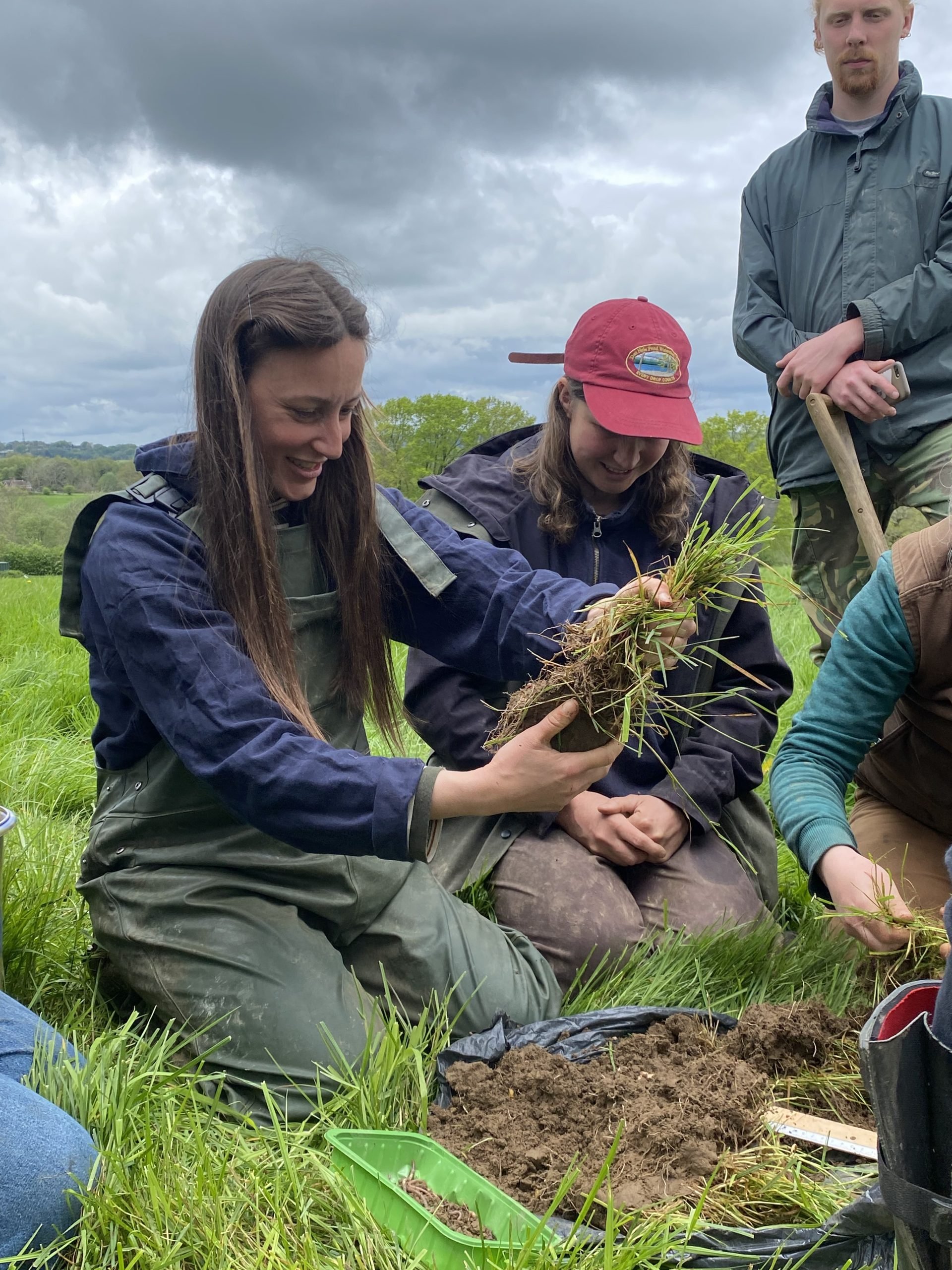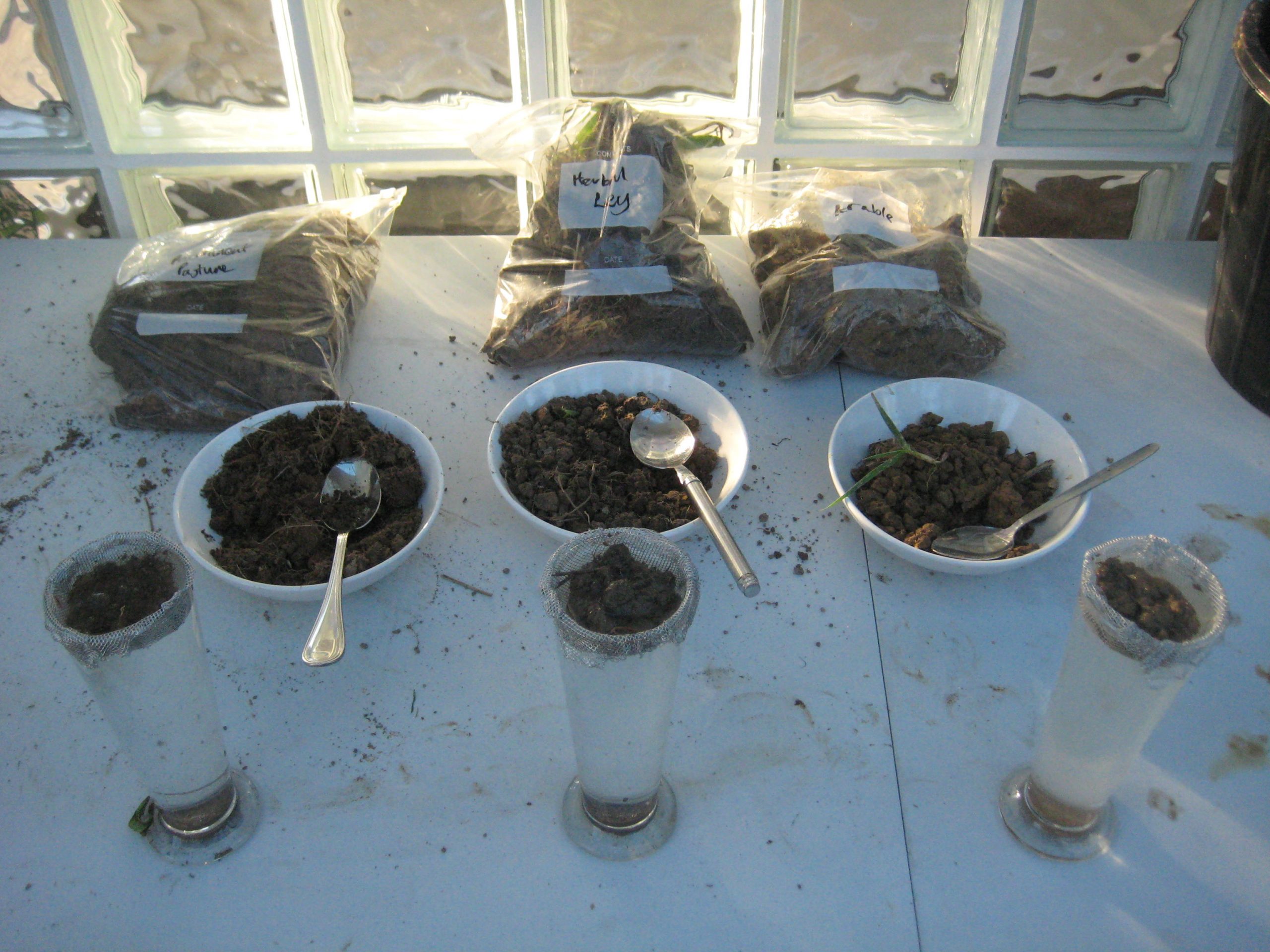Regenerative Agriculture
Regenerative agriculture is a way of farming that works with nature to help tackle climate change and ecological collapse. It is a grassroots revolution; a response by farmers to the environmental damage caused by conventional petrochemical industrial agriculture.
The High Weald’s complex and intimate blend of woods, hedgerows and fields is ideally suited to this holistic way of farming.
We are helping a growing number of farmers across the AONB move over to a regenerative farming model, offering advice, training and access to grant funding.
“The soil is the great connector of lives, the source and destination of all. Without proper care for it, we can have no life.”
Wendell Berry
From the ground up…
Regenerative agriculture starts with building healthy soil by focusing on rebuilding organic matter – and the natural living biodiversity – in the soil.
This improves the ground’s ability to:
- draw down carbon from the air and store it underground
- hold and clean water
- help wildlife above and below the ground
- produce nutrient-dense food year after year.
Regenerative agriculture helps farmers be less reliant on oil and chemicals such as pesticides and artificial fertilisers. It helps reduce production costs and is proven to be profitable.
Regenerative agriculture is good for the planet, good for farmers and good for the rest of us.

What does Regenerative Agriculture involve?
Although the term “regenerative” is relatively new, its principles are not. As a system of farming, it draws on a range of modern and historic expertise from across the world. Some important practices include:
- Minimising or eliminating tillage. Ploughing and discing breaks up the soil aggregation and disrupts underground microorganism communities, resulting in increased carbon emissions and soil erosion. Reducing or stopping mechanical disturbance helps to rebuild the soil ecosystem.
- Cover crops, companion crops, crop rotation, and application of animal manure. These techniques increase soil fertility and health without the use of chemicals. They also improve water retention, the soil ecosystem, and the drawdown of carbon from the air and its storage in the soil.
- Inoculation of soils with composts or compost extracts to restore the soil population, structure, and functionality. Regenerative and organic farmers avoid chemical fertilisers but use composts instead to keep the soil from degrading and losing nutrients.
- Rotational planned livestock grazing. This technique improves pasture and grazing productivity, increases water retention and the drawdown of carbon from the air and its storage in the soil, and enhances the soil ecosystem. This leads to better above and below ground biodiversity, lower carbon dioxide and methane emissions, and naturally healthy animals.
- Farming with trees (agroforestry). There are three main practices: silvopastoral agroforestry (combining trees and livestock); silvoarable agroforestry (combining trees and crops); and the use of hedgerows, shelterbelts, scrub, and riverside buffer strips. Benefits include better crop and livestock productivity, elimination of soil erosion, increased biodiversity and soil carbon, and climate change resilience.
All these practices improve the health of the soil.
Why is healthy soil so important?
In nature, healthy soils are full of life. There are more soil microorganisms – in the form of fungi, bacteria and soil microbes – living in a teaspoon of healthy soil than there are people on the earth.
Along with earthworms, beetles, ants, and mites, these microorganisms all play their part in boosting soil and plant health. Healthy ‘soil life’ works together to reduce diseases in plants and provide nutrients and minerals. The plants nourish wildlife, crops and other plants, and in turn the grazing livestock.
Conventional agriculture places little value on soil life. Instead, it relies on the use of pesticides and artificial fertilisers to grow food, which kills these beneficial organisms.
When combined with conventional farming practices such as ploughing and planting single varieties of crops, this reliance on chemicals can:
- degrade the farm’s soil and its water cycle
- reduce the farm’s natural productivity, fertility, and biodiversity, and
- release large amounts of carbon from the soil into the atmosphere.
In contrast, regenerative farming reveres soil health. It regenerates and builds the soil and then protects and nurtures the life in the soil by working with nature rather than against it.
As the soil health recovers it becomes naturally fertile and productive, allowing soil life to return and thrive. This stabilises the farm ecosystem by:
- stopping soil erosion
- building more soil
- improving water infiltration, and
- increasing the farm’s ability to absorb carbon from the air and store it within the soil.

Who is doing it?
Regenerative agricultural techniques have been used successfully throughout the world to address environmental and soil degradation.
In the UK there is a growing realisation that conventional agriculture has also degraded our soils and environment and, as a result, many farmers are now choosing to adopt regenerative agriculture practices.
There is a growing number of regenerative farmers in the High Weald – those that have made the transition don’t want to turn back!
Does Regenerative Agriculture suit the High Weald?
Our complex and intimate blend of woods, hedgerows, and fields is ideally suited to regenerative agriculture.
Our smaller, permanent grass fields bound by hedges and woods suit holistic planned livestock grazing, the grass, the trees and the hedges providing nutrient-rich forage for cows and sheep and other livestock.
Our clay soils benefit from regenerative agriculture techniques, which encourages good grass and crop growth even during prolonged dry spells and allow for better water infiltration during wet conditions (healthy soils absorb water effectively).
What has Regenerative Agriculture got to do with climate change?
Climate change is about too much carbon in our atmosphere. But carbon is not our enemy. It’s the building block of life and every living thing needs carbon, including us (18% of the human body is carbon).
The problem and the solution are simply a matter of balance.
Restoring and maintaining the health of our soils and using regenerative agriculture practices has an important role to play addressing climate change.
Get involved
Are you a farmer, a forester, a land manager, or a landowner?
If you want to know more about regenerative agriculture and agroforestry, please get in touch.
We can provide detailed advice, put you in touch with a network of farmers in the High Weald and beyond who are using these techniques, and we organise a range of training events on regenerative agriculture and agroforestry practices.
Are you looking to support agriculture and forestry that genuinely works with nature, supports local communities, and helps tackle climate change and ecological collapse? Do you have Corporate Social Responsibilities or climate change targets you’d like to meet?
Whether you are a private investor or work for a public organisation or a charity, there are opportunities for you to get involved and make a real difference. Many farmers feel trapped and worry they don’t have the means, the knowledge or the support required to make the move from a conventional farming system to a regenerative farming system.
If you are keen to explore ways in which you can support High Weald farmers and other land managers make the move to a new regenerative farming system that will be good for them and good for the planet, please contact High Weald AONB co-director Jason Lavender.
